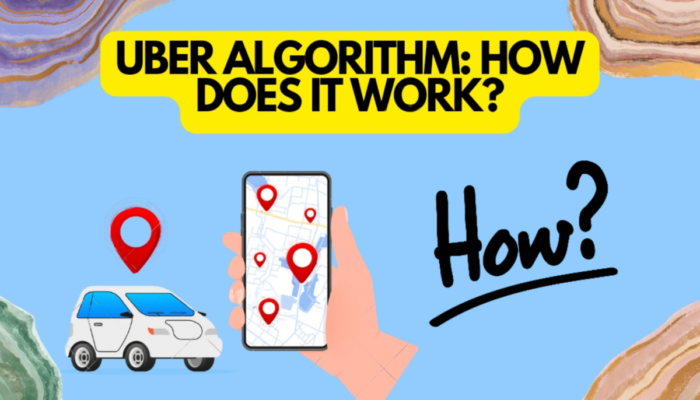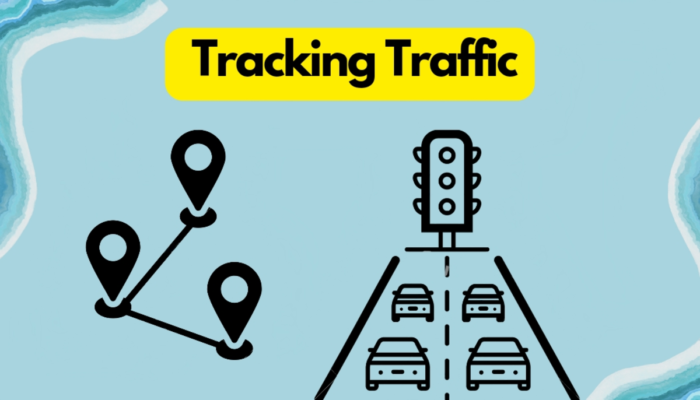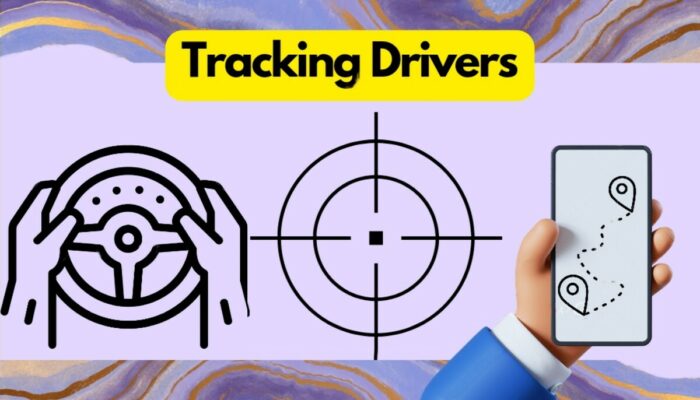Uber has become a household name in transportation, and for good reason. The ride-hailing service has revolutionized the way people get around, making it easier and more convenient than ever before. But have you ever wondered how Uber determines the price of your ride or how it matches you with the perfect driver? The answer lies in the Uber algorithm. The Uber algorithm is the backbone of the company’s business model, and it’s responsible for everything from tracking traffic to calculating fares. In this article, we will take a closer look at the Uber algorithm and how it works.

WHAT IS UBER?
Uber is a popular ride-hailing app that has revolutionized the transportation industry. Founded in 2009, Uber quickly gained popularity for its convenient and efficient service that allows users to request a ride with the tap of a button. But how does Uber actually work?
At its core, Uber is a technology platform that connects riders with drivers. When a rider requests a ride through the Uber app, the algorithm begins working to match them with the nearest available driver. Once a driver accepts the ride request, the rider can track the driver’s location in real-time and receive an estimated time of arrival.
But the Uber algorithm does much more than just match riders with drivers. It also takes into account a number of factors such as traffic conditions, driver availability, and distance to calculate the most efficient route and estimate the fare for the ride.
The algorithm uses a pricing model that takes into account the time and distance of the trip, as well as any additional fees such as surge pricing during high-demand periods. Uber uses a dynamic pricing model that adjusts fares in real-time based on supply and demand, so riders may see higher prices during peak times.
Overall, the Uber algorithm is a complex system that helps ensure the efficient and reliable service that the company is known for. By taking into account a variety of factors, Uber is able to provide riders with fast, affordable, and convenient transportation options.
How Does Uber Algorithm Work For Drivers?
The inner workings of the Uber algorithm have long been a topic of curiosity for both users and competitors alike. How does the popular rideshare service calculate fares? How much data is being tracked and cataloged with each ride? These are just a few of the questions that have been raised about the Uber algorithm. While the code behind the algorithm is a closely guarded secret, Uber has provided some insight into how their system operates. At its core, the Uber algorithm that manages vast amounts of data and makes decisions that keep the company running smoothly. In this article, we’ll break down the essential aspects of the Uber algorithm and shed some light on how it all works.
#1 Tracking Traffic

When a user requests a ride on the Uber app, the algorithm starts working by tracking real-time traffic in the area. This data is combined with historical traffic patterns to determine the estimated time of arrival (ETA) for the driver to reach the pickup location. The Uber pricing algorithm then takes into account the current demand for rides, the estimated time and distance of the trip, and the driver’s availability to determine the fare for the ride. The algorithm also considers other factors such as tolls, surcharges, and promotions, to offer a fair and transparent pricing structure.
The Uber app provides users with a real-time map that shows the location of their driver, as well as the ETA for their arrival. This information is constantly updated based on traffic conditions, ensuring that the driver takes the most efficient route to the destination. By tracking traffic in real-time, the Uber algorithm can optimize driver routes and reduce the time it takes to complete a ride.
In summary, the Uber algorithm tracks traffic patterns to provide accurate ETAs for riders and optimize driver routes for quicker and more efficient rides. By using a combination of historical data and real-time information, the algorithm can accurately price rides and ensure a seamless user experience.
#2 Tracking Money
Uber’s algorithm for tracking money is crucial to the company’s success. While passengers may only see a simple fare calculation when they request a ride, there are a lot of moving parts behind the scenes. One of the key elements of the Uber algorithm is how the app handles payments and payouts to drivers.
When a rider requests a ride, Uber calculates the fare based on distance and time, as well as other factors like surge pricing and tolls. The fare is then charged to the rider’s credit card or other payment method, and the app takes a commission before paying the driver. Uber uses a complex algorithm to determine driver payouts, factoring in variables like distance, time, and demand for rides.
Drivers also have access to the Uber algorithm for drivers, which helps them to optimize their earnings. The Uber algorithm provides drivers with information about when and where to drive to maximize their chances of getting high-paying fares. Uber also offers a feature called Uber dispatch jobs, which allows drivers to accept on-demand and scheduled rides directly from the app.
Overall, tracking money is a critical component of the Uber algorithm. By accurately calculating fares and payouts, Uber is able to keep both riders and drivers happy and ensure that its business model remains profitable.
#3 Tracking Drivers

Uber’s algorithm also tracks drivers to ensure a seamless ride-sharing experience. The Uber driver algorithm is designed to match riders with nearby drivers who can provide the most efficient and cost-effective transportation. By tracking drivers’ locations and availability, the app can quickly connect riders with the closest driver and ensure minimal wait times.
One example of how the algorithm tracks drivers is the rideshare service at Truist Park, the home of the Atlanta Braves baseball team. Uber has a designated pickup and drop-off location, and the app uses real-time data to direct drivers to the most efficient route for entering and exiting the stadium. This reduces congestion and ensures a smooth experience for both riders and drivers.
In addition to tracking drivers’ locations, the algorithm also monitors their driving behavior and ratings from riders. This helps Uber to identify high-performing drivers and reward them with incentives, while also addressing any issues with drivers who receive poor ratings or violate company policies.
Overall, tracking drivers is a crucial element of the Uber algorithm. By efficiently matching riders with drivers and monitoring driver performance, Uber can provide a safe and reliable ride-sharing service that meets the needs of both parties.
#4 Tracking the Distance
Tracking distance is another crucial aspect of the Uber algorithm. When a rider requests a ride, the app calculates the estimated time and distance of the trip to determine the fare. This information is also used in the Uber matching algorithm, which pairs riders with the closest available driver.
The algorithm takes into account a variety of factors when matching riders with drivers, including distance, time, and driver availability. By tracking distance, Uber can ensure that riders are matched with drivers who are nearby and can get to them quickly, which helps to reduce wait times and improve overall rider satisfaction.
In addition to matching riders with drivers, tracking distance is also important for driver optimization. The Uber driver algorithm provides drivers with information about where the highest demand for rides is, which can help them to decide where to drive to maximize their earnings. For example, if there is a big event like a concert or sports game at the Rideshare Lot at Truist Park, drivers may want to focus their efforts in that area to take advantage of the high demand.
Overall, tracking distance is a key component of the Uber algorithm that helps to ensure that riders are matched with drivers efficiently and that drivers can optimize their earnings by focusing on high-demand areas. By accurately tracking distance and using it in the matching and driver optimization algorithms, Uber is able to provide a seamless and efficient ride-sharing experience for both riders and drivers.
#5 Putting It All Together
Putting it all together, the Uber algorithm tracks and processes a variety of data points in real-time. By combining information on traffic patterns, payment processing, driver availability, and rider demand, Uber is able to provide a seamless and efficient experience for both passengers and drivers.
The algorithm starts with the Uber matching algorithm, which matches riders with nearby drivers based on factors like location, distance, and driver availability. Once a driver accepts a ride request, the app begins tracking distance and time to calculate the fare. Surge pricing may also come into play during times of high demand, causing fares to increase in areas with a lot of riders and few available drivers.
As the ride progresses, the app continues to track distance and time, as well as other factors like traffic patterns and tolls. At the end of the ride, the fare is charged to the rider’s payment method and the app takes a commission before paying out the driver.
Meanwhile, the Uber driver algorithm is working to help drivers optimize their earnings by providing real-time information on rider demand and driver availability. This information helps drivers decide when and where to drive in order to maximize their chances of getting high-paying fares.
Overall, the Uber algorithm is a complex and powerful tool that enables the company to efficiently match riders with drivers, calculate fares, and process payments. By tracking data on everything from traffic patterns to driver earnings, Uber is able to create a seamless and reliable experience for everyone who uses the platform.
Frequently Asked Questions
How does Uber calculate fares?
Uber calculates fares based on several factors including distance, time, surge pricing, tolls, and other fees. The app uses a complex algorithm that determines the fare and takes a commission before paying the driver.
What is the process of how the Uber algorithm pairs passengers with drivers?
The Uber algorithm matches riders with drivers based on proximity, driver availability, and ride demand. It also takes into account other factors such as driver ratings and ride history to ensure a smooth and safe experience for both parties.
How does the Uber algorithm track drivers?
The Uber algorithm tracks drivers using GPS technology built into the driver’s smartphone. This allows the app to calculate distance and time for the fare and also enables real-time tracking of the driver’s location for the rider’s convenience.
What data does the Uber algorithm collect and use?
The Uber algorithm collects and uses data such as rider and driver location, ride history, payment information, and ratings. It uses this data to improve the rider experience, match riders with drivers, and optimize driver earnings.
In what way does the Uber algorithm enhance the earnings of drivers?
The Uber algorithm optimizes driver earnings by providing them with information about when and where to drive to maximize their chances of getting high-paying fares. The app also offers features like Uber dispatch jobs, which allow drivers to accept on-demand and scheduled rides directly from the app. Additionally, the algorithm factors in distance, time, and demand for rides to calculate driver payouts.






You must be logged in to post a comment.